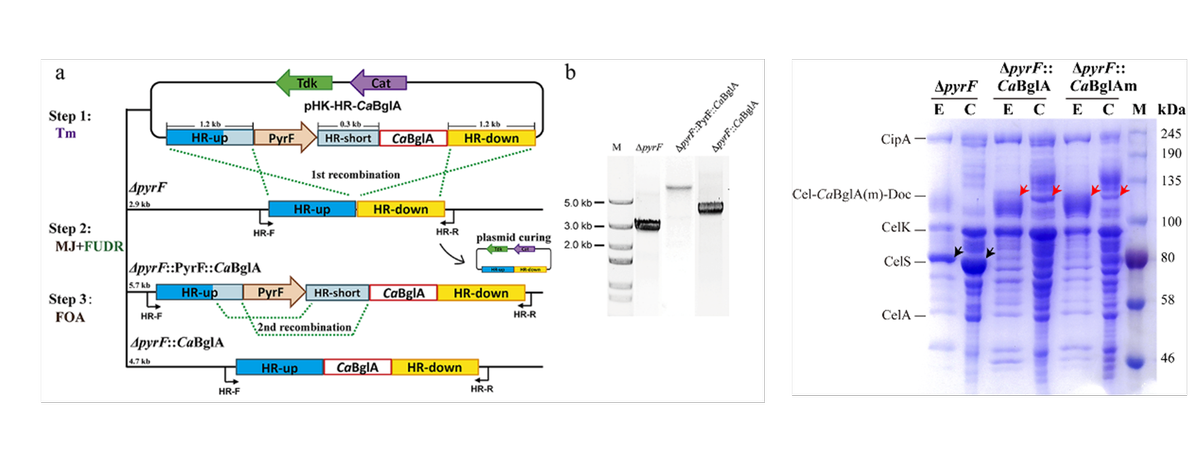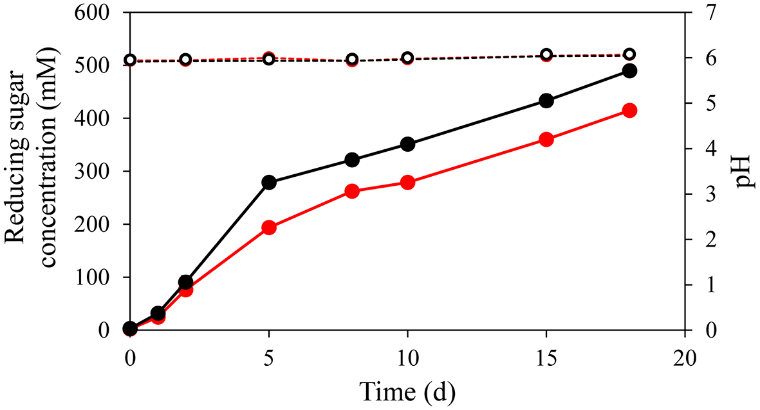[2017.5.12] Cost-efficient saccharification is one of the main bottlenecks for industrial lignocellulose conversion. Metabolomics group of Qingdao Institute of Bioenergy and Bioprocess Technology is working towards highly efficient cellulose saccharification to promote the utilization of lignocellulosic biomass, and has developed a series of genetic tools for the engineering of cellulosome-producing cellulolytic microorganisms, such asClostridium thermocellum. The industrial use ofC. thermocellumis restrained due largely to the inhibition of the hydrolysate cellobiose to its cellulosome. By use of previously developed tools, we constructed a recombinant strain ofC. thermocellum∆pyrF::CaBglA as a whole-cell catalyst for highly efficient cellulose saccharification (Figure 1). The results have been published inBiotechnology for Biofuels[Zhang J, et al, 2017, 10(1):124]. The first author is Jie Zhang, a Ph.D. student in Metabolomics group of QIBEBT, and Professor Qiu Cui and Associate Professor Ya-Jun Liu are the co-corresponding authors.
This recombinant strain could produce a secretory exoglucanase CelS-bearing heterologous BGL (Figure 1). Without the extra addition of enzymes, the relative saccharification level of ∆pyrF::CaBglA was stimulated by over two folds compared to its parent strain ∆pyrF through a two-stage saccharification process with 100 g/L Avicel as the carbon source. The production of reducing sugars and the relative saccharification level were further enhanced to 490 mM (88 g/L glucose equivalence) (Figure 2) and 79.4%, respectively, with increased cell density. The high cellulose degrading ability and sugar productivity suggested that the whole-cell-catalysis strategy for cellulose saccharification is promising, and theC. thermocellumstrain ∆pyrF::CaBglA could be potentially used as an efficient whole-cell catalyst for industrial cellulose saccharification.

Figure 1. Knock-in of genecaBglA in the chromosome ofC. thermocellum∆pyrF and SDS-PAGE analysis of cellulosomal (C) and extracellular proteins (E).

Figure 2. Saccharification ofC. thermocellumstrain∆pyrF::CaBglA with increased cell density.
See the paper:
Jie Zhang, Shiyue Liu, Renmin Li, Wei Hong, Yan Xiao, Yingang Feng, Qiu Cui* and Ya‑Jun Liu* (2017) Efficient whole-cell-catalyzing cellulose saccharification using engineeredClostridium thermocellum.Biotechnol. Biofuels10, 124. [PMID:28507596] [Full text (Publisher website)]